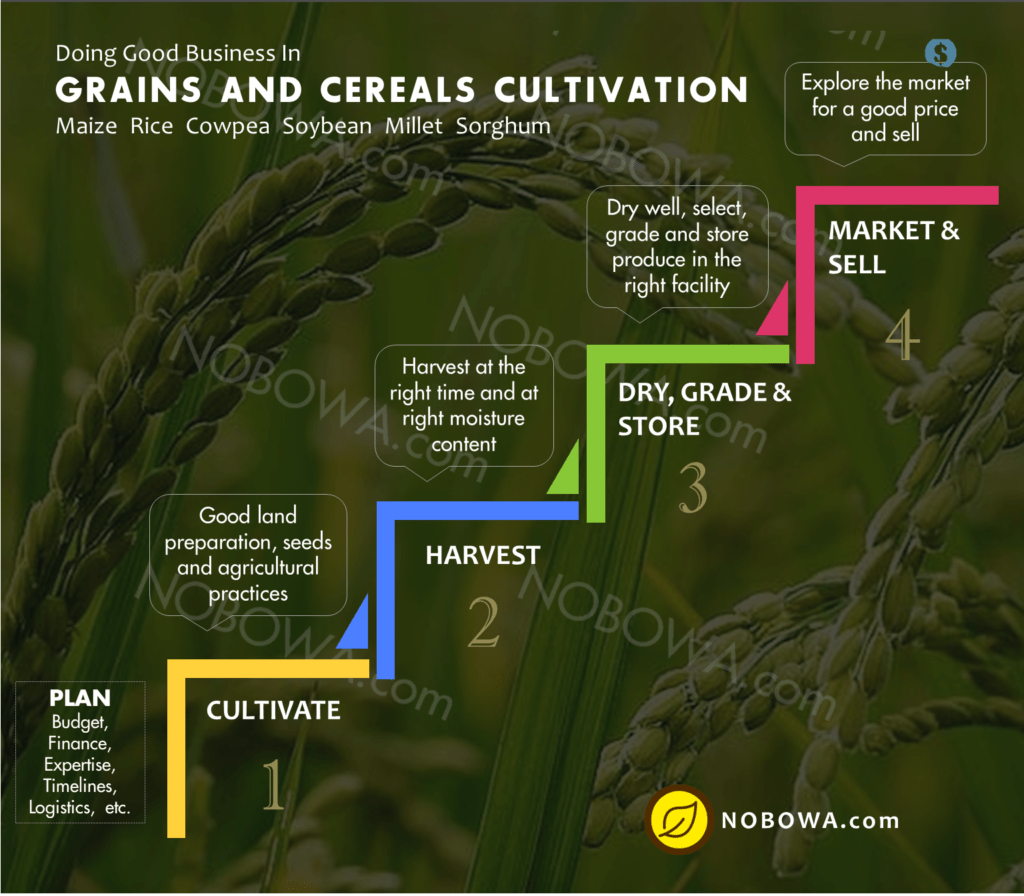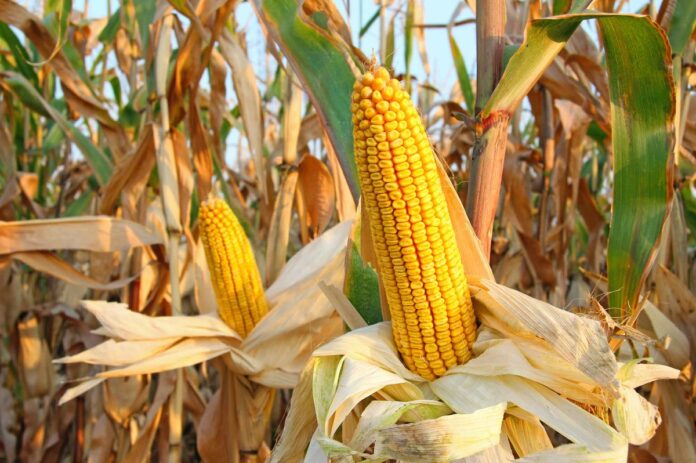This Guide to Commercial Maize Production Under No-till will help you produce maize at a reduced cost for higher yields and profits, even when rainfall is low.
No-till simply means that you do not disturb the structure of the soil, not by ploughing nor harrowing. Also, you do not burn residue after clearing. You can read more about no-till and the effects of several years of burning and ploughing.

Maize (Zea mays) can grow across a range of agro-ecological zones. That is in a lot of areas with different weather conditions. It is an important part of the human diet. It is also a very important part of poultry and livestock feed.
Maize occupies about 24% of farmlands in Africa and occasional drought stress affects about 40% of Africa’s maize-growing areas. Yield losses of 10-25%. Approximately 25% of the maize suffers frequently from drought. Harvest losses could go up to 50% according to “Maize In Africa” by International Plant Biotechnology Outreach.
This is why farmers need to use sustainable methods in maize production, like the no-till method. Technologies or methods that will reduce the risks even when the weather is not good and soil fertility is low.
Site Selection
A good site selection with the no-till method will help you reduce the cost of production and increase yield. This ultimately means more money.
Select areas with sandy loam soils. Also, select areas that have high organic matter like dead leaves and roots.
Do not select areas with big trees. They may shade the maize heavily. A couple of trees are okay but they have to be about 15 meters apart. In the case where you will use machines like a tractor, big roots of the trees will make it difficult.
Moreover, try to avoid areas with ant-hills and swamps or waterlogged areas.
Read also: Site Selection for Farming Purposes: 7 Very Key Factors to Consider
Soil Test
In Commercial Maize Production Under No-till, it is always good to take a sample of your soil to the lab for analysis. This will help you know the pH (i.e. if your soil is acidic or alkaline), and the levels of Nitrogen, Phosphorus, Potassium and the percentage Organic Matter. This information will help you know the amount of fertilizer to apply to your soil if you have to.
Land Preparation
This is the part you start applying the no-till method. It is important you understand this part.
If you do manual clearing of land, slash vegetation and leave the residue to cover the surface of the soil. Cut small trees in smaller parts so they can decay easily. This will also give easy access to the soil when planting. Remove big trees and use as fuelwood.
Do not burn. Again, do not burn the vegetation residue, thinking that it will make it easier for planting. When you burn, it leaves the soil bare. It also reduces the amount of organic matter in the soil. If the soil cover is very thick, you can use a roller-crimper. The roller-crimper presses the cover against the soil to make access to the soil easier.
What do you do if you do not have a roller-crimper?
Read also: No-till (Conservation) farming vs Conventional Tillage Agriculture
Seed Selection
If you want to get higher yields in maize production, choose a variety of maize with high yield. Make sure it is good for your area. Moreover, get your seeds from credible and licensed seed dealers.
Then, test your seeds to know the germination percentage. It will help you know how many seeds to plant per hill. If the seeds are very good, you can plant one seed per hill.
Read also: 6 Factors to Consider in Quality Crop Seed Acquisition for Agriculture
Planting
Maize is usually planted between March and May for the major season and September and October for the minor season.
You can sow maize after well-distributed rainfall incidence. So that there is enough moisture for germination.
Sow one seed per hill at 75cm x 30cm at a depth of 5 cm. This increases the plant population and yield. Sowing one seed per hill will help the individual plants get enough nutrients. Planting distance for different maize varieties may be different.
The seeds germinate about 5 days after planting. You can replace seeds that do not germinate to maintain the plant population.
Weed Control
Another important advantage of maize production under no-till is that it prevents weeds from growing.
Weeds are fewer when you practice good land preparation and no-till. However, when those fewer weeds grow, control them very well at the right time. This reduces competition and pests when the maize is growing. You can do weed control twice. Under no-till, weed density is low compared to heavy tillage.
Fertilization
For commercial maize production under no-till, you may apply a synthetic or organic fertilizer to increase the yield of maize. Soil tests will help to know if you need to apply fertilization. Also, the type of fertilizer and the amount you need. Fertile land may not need fertilizer.
Apply 2bags (50kg) of NPK and one bag (50kg) of Sulphate of Ammonia to an acre of land. You can also use a well-formulated organic fertilizer. Apply 100bags per an acre.
Pest control
Fall armyworm and stem borers are some of the major pests of maize. These pests can reduce yield by about 80%.
You can use IPM to reduce pest incident. No-till technology creates a natural environment for many organisms. In this case, beneficial organisms feed on and destroy some of the harmful pests.
Learn how to control the Fall Armyworm. This pest has become a major pest of maize. Consult the experts on how to use chemicals to control pests on your maize farm.
Read also: Managing Crop Pests with Integrated Pest Management (IPM)
Harvesting
Different varieties of maize have different maturity periods. You can harvest maize at different stages after the cob is formed depending on what consumers want. Know the maturity period of the variety you choose.
Maize reaches maximum dry weight after about 30days of silking. Silking is the silky hairy materials at the top of the maize cob.
Harvest at the right time to reduce post-harvest losses.
Reference:
Maize In Africa – International Plant Biotechnology Outreach.


